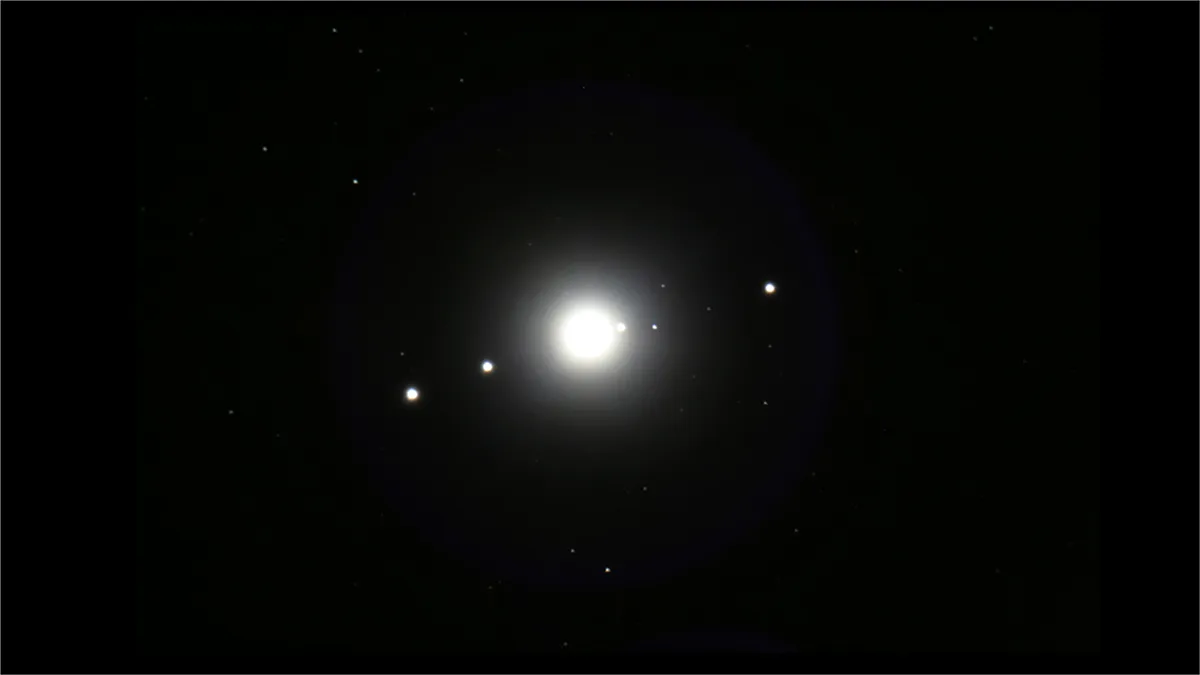Geocentrism vs heliocentrism might be one of the biggest debates in the history of science; or at least one of the most important.
When it comes to scientific breakthroughs and the impact they’ve had on our understanding of the world around us, there aren’t many that can compare with the realisation, round about the dawn of the 17th century, that Earth orbits the Sun, rather than the other way around.
Today, this seems obvious – the sort of basic information that we acquired at our mother’s knees, round about the same time we learned that 2 + 2 = 4, that what goes up must come down, and that a cow says “moo”.
It would, though, have seemed a very strange idea to a caveman.
After all, they stayed in the same place: it was the Sun that rose every morning in the east and set every evening in the west, just as the Moon rose every evening and set every morning (mostly).
So clearly the Sun and the Moon were in orbit around Earth.
That belief is called ‘geocentrism’ – and it held sway for centuries before 'heliocentrism' really took over.

The Greek mathematician Eudoxus, born around 400 BC, is considered by many to be the first to have produced a geocentric model of the Universe.
Other famous astronomers and thinkers from history argued for the geocentric model, including Plato and Aristotle and the Greco-Roman astronomer Ptolemy.
The ancient Greeks, the Romans, the great Islamic astronomers of the 8th-13th centuries… all were firm in their belief that Earth was at the centre of the Universe, and everything else revolved around it.
Well, almost all. In fact, a heliocentric model of the Solar System – ie, one with the Sun at its centre – was first proposed by the Greek scholar Aristarchus of Samos (c.310-c.230 BC).
But his ideas didn’t find many takers for nearly two whole millennia.

Heliocentrism in the modern era
Nicolaus Copernicus was the first astronomer to really champion the idea, publishing his De revolutionibus orbium coelestium (‘On the movement of the heavenly spheres’) in 1543.
However, there was a problem: Copernicus’s calculations and predictions didn’t really stack up, mostly because they assumed the orbits of the planets to be circular, whereas we now know that they are elliptical.
The next important player in our story was Galileo Galilei, whose observations with his newly invented telescope in 1609 revealed the moons of Jupiter.
This not only proved that we didn’t live in a geocentric universe (because here were some heavenly bodies that clearly did NOT orbit our own Earth), it also showed that smaller bodies can orbit larger bodies that are themselves in motion.

Prior to this discovery, any suggestion that the Sun didn’t orbit the Earth was rapidly countered by the fact that the Moon clearly does.
Thanks to Galileo’s discovery, though, we now knew that both things could be true at once, with Earth orbiting the Sun while the Moon orbits Earth.
Meanwhile, Johannes Kepler was also studying the motions of the planets, publishing his three laws of planetary motion between 1609 and 1619.
Kepler’s big contribution was to bring elliptical orbits into the picture – thus completing a model of the Solar System that, essentially, still stands today.
We’ll call that Sun 3-Earth 0, then!
